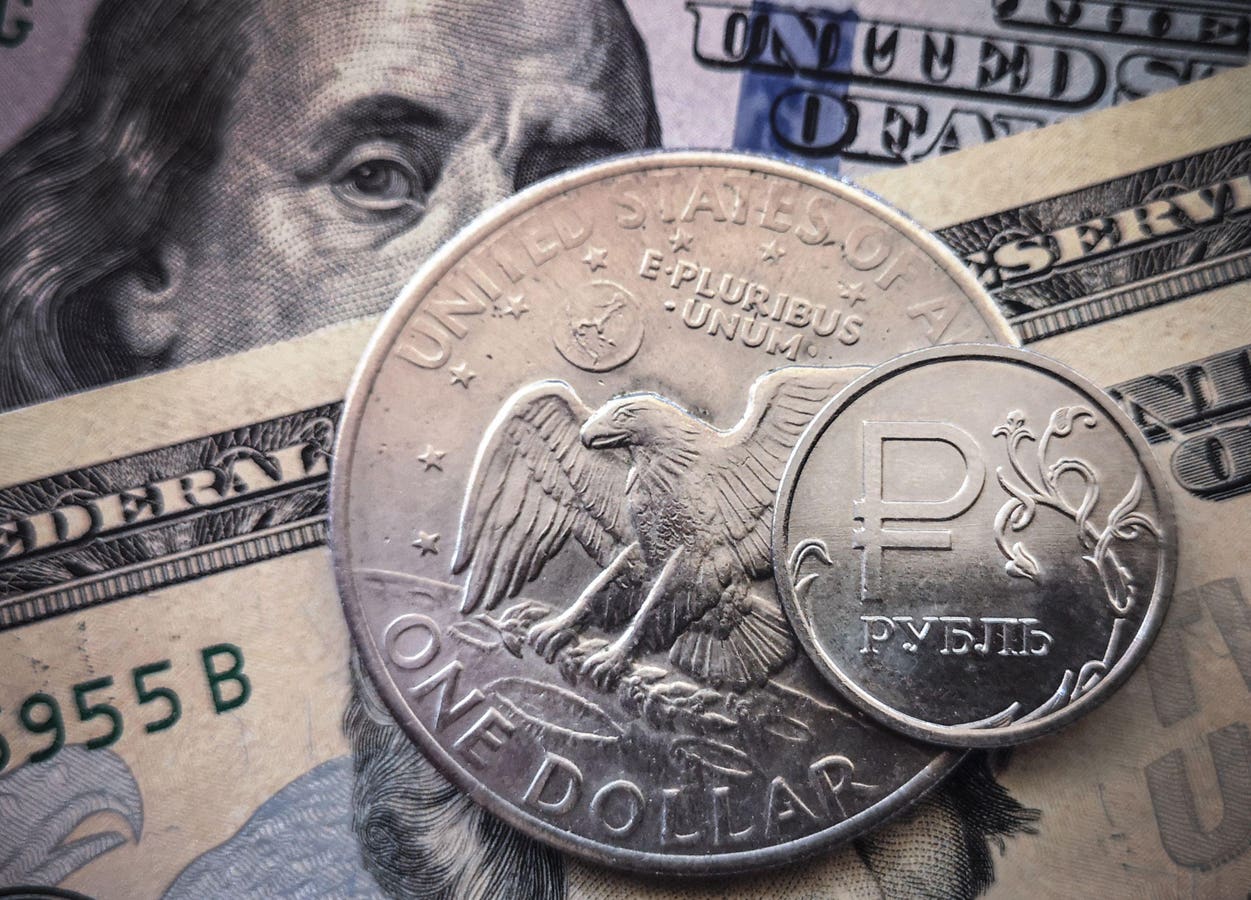
Russia’s Move To Gold May Jolt Your Company
Fixing the ruble to gold may change the way U.S. companies operate in the global marketplace – and not for the better.
 www.forbes.com
www.forbes.com
Suffering from U.S. and EU sanctions, Russia made a surprise move—its central bank fixed the price of 5,000 rubles to a gram of gold. Few Western investors or executives noticed.
Then, Russia sprang its trap. Its finance ministry announced that it would require payment for oil, natural gas and other of its significant exports in rubles.
“What the Russians did was a genius, I hate to say it,” explains Jack Bouroudjian, former president of Commerce Bank in Chicago and now chairman of the Global Smart Commodity Group. “It forces people to go to the Russian central bank and pay gold to get rubles to make the transactions.” The ruble had been trading in the range of 70 to 80 for a U.S. dollar. After the sanctions, it plummeted to 120. “Now the ruble basically recovered, trading 80 rubles to the dollar. And it’s because of the way they pegged the ruble to gold.”
U.S. companies that have either international suppliers or customers could be jolted by Russia’s golden move. Overseas business partners may need to barter gold for rubles to pay for inputs, like energy, minerals or fertilizers, and therefore demand that their U.S. counterparts pay in rubles or bullion. Additionally, American firms may need to acquire a stack of rubles to pay for their own inputs for foreign-based factories, warehouses or raw materials.
By tying the ruble to gold, Russia pushes to make its currency independent of comparisons to the U.S. dollar. Requiring countries to buy its desired major exports with the ruble is an attempt to create an alternative global financial path and also to increase the amount of gold it holds.

